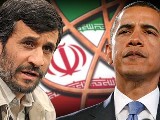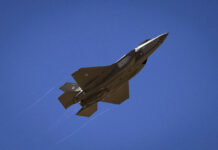 By Bret Stephens
By Bret Stephens
As a young Soviet military officer, Viktor Esin was stationed in Cuba during the October 1962 crisis, where he had release authority over a nuclear-tipped missile targeting New York. On his first visit to Manhattan in December, I made sure to thank him for not obliterating our city.
Gen. Esin rose to become chief of staff for the Strategic Rocket Forces, and he is now a professor at the Russian Academy of Military Science. So what’s been on his mind lately? Mainly the stealthy rise of China to a position of nuclear parity with the U.S. and Russia. “All in all, they may have 850 warheads ready to launch,” he says. “Other warheads are kept in storage and intended to be employed in an emergency.” He estimates the total size of the Chinese arsenal at between 1,600 and 1,800 warheads.
That is something to bear in mind as the Obama administration seeks to slash the U.S. arsenal to about 1,000 strategic warheads. That would be well below the ceiling of 1,550 warheads stipulated by the 2010 New Start Treaty. The administration also wants to spend less than the $80 billion it promised on modernizing America’s rusting nuclear-weapons infrastructure.
On the strength of that promise 13 Republican senators gave President Obama the votes he needed to ratify New Start. Suckers! Now the president means to dispense with the Senate altogether, either by imposing the cuts unilaterally or by means of an informal agreement with Vladimir Putin. This is what Mr. Obama meant in telling Dmitry Medvedev last year that he would have “more flexibility” after re-election.
But what, you ask, is so frightening about having “only” 1,000 nuclear weapons? Surely that is more than enough to turn any conceivable adversary Paleolithic. Won’t we remain more or less at parity with the Russians, and far ahead of everyone else?
It all depends on China. It is an article of faith among the arms-control community that Beijing subscribes to a theory of “minimum means of reprisal” and has long kept its arsenal more or less flat in the range of 240-400 warheads. Yet that is a speculative, dated and unverified figure, and China has spent the last decade embarked on a massive military buildup. Isn’t it just possible that Beijing has been building up its nuclear forces, too?
When I broached this theory in an October 2011 column-noting that the U.S. had, in fact, underestimated the size of the Soviet arsenal by a factor of two at the end of the Cold War-I was attacked for being needlessly alarmist. But one man who shares that alarm is Gen. Esin. In July 2012, he notes, the Chinese tested an intermediate-range DF-25 missile, which Russia carefully tracked.
“In the final stage the missile had three shifts in trajectory, dropping one [warhead] at each shift,” he notes. “It’s solid evidence of a MIRV [multiple warhead] test.” A month later, the Chinese launched a new long-range, MIRV-capable missile, this time from a submarine.
The general runs through additional evidence of China’s nuclear strides. But what should really get the attention of U.S. military planners are his observations of how Russia might react. “If China doesn’t stop, Russia will consider abandoning the INF Treaty,” he warns. “Russia cannot afford not taking this factor into account.”
The Intermediate-range Nuclear Forces Treaty, signed in 1987 by Ronald Reagan and Mikhail Gorbachev, is a cornerstone of the settlement that ended the Cold War. If Russia abandons it and begins building a new generation of intermediate-range missiles, the U.S. would either have to follow suit or lose parity with Moscow. We’d be off to the nuclear races once again.
And not just with Moscow. As North Korea gears up for a third nuclear test, South Korea is eager to begin recycling plutonium-ostensibly for peaceful purposes, in reality as a nuclear hedge against its neighbors.
Then there is Japan, which is scheduled to bring on line a reprocessing plant at Rokkasho later this year. As nuclear expert Henry Sokolski notes, “the plant will produce eight tons of nuclear weapons usable plutonium each year (enough for 1,000 to 2,000 Hiroshima-sized bombs) at a time when Japan has no nuclear reactors to burn the material.”
Like the South Koreans, the Japanese don’t want a nuclear arsenal: They have lived peacefully under the nuclear umbrella of the United States for nearly seven decades. But as that umbrella shrinks, it covers fewer countries. Those left out will look to deploy umbrellas of their own. “The U.S. has obligations on extended deterrence in Asia,” Gen. Esin says. “The problem has to be at the forefront, not avoided.”
President Obama has often said that he wants to live in a world without nuclear weapons. Who wouldn’t? Even Gen. Esin is a “Global Zero” signatory. But the real choice isn’t between more nuclear weapons or fewer. It is between a world of fewer U.S. nuclear weapons and more nuclear states, or the opposite. In his idealism, the president is setting the stage for a more nuclearized world.












This article is full of errors and unsubstantiated theories, starting with the statement that Gen. Esin had “release authority over a nuclear-tipped missile targeting New York”. Back in the day, the only Soviet release authority for nuclear weapons was in the Kremlin.
As for China, since Gen. Esin is now an esteemed professor, he likely does not have the latest intelligence on that country (nor on Russia, for that matter).